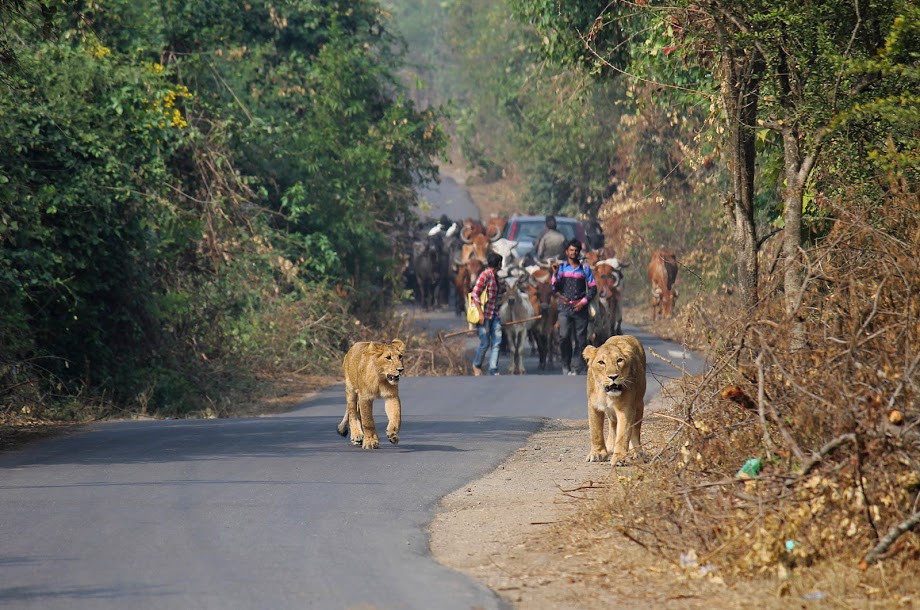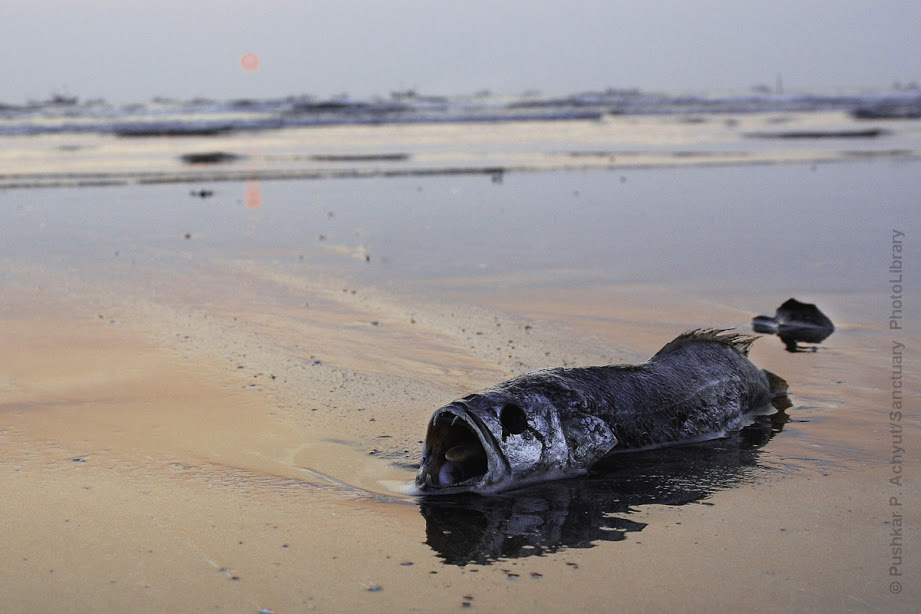Three Laws That Need Change
First published in Sanctuary Asia,
Vol. 40
No. 8,
August 2020
By Neha Sinha
The year 2020 came with a bang. It was the end of a decade that was easy to pronounce. People began talking about their accomplishments over the last 10 years, sharing their dreams for the coming decade. If you had said at that time that the world would come to a standstill because of a microscopic virus, not even technically a living organism, you would have been called a lunatic. Yet, the unthinkable happened. The world did come to a screeching halt because of COVID-19. What is far more unthinkable in my eyes is that despite the universal suffering, we did not pay any heed to environmental safeguards that may have saved us, and wildlife. The fact that we are all incarcerated in our homes, witnessing death and panic, and praying our actions don’t make us deadly to each other, has changed nothing in the Indian policy landscape.
While offices remained closed for the lockdown, the Ministry of Environment, Forest and Climate Change (MoEFCC) met through video conferences. This was not to find an environmental solution to the pandemic, but to clear projects that would entail the deforestation of lakhs of trees or expedite large projects in unique ecosystems. During the lockdown, the Ministry also tried to push through several amendments in the Environmental Impact Assessment (EIA) notification of 2006. People were expected to give comments on a draft EIA law during a time when they could not meet each other, to discuss a notification, which would play a part in everyone’s life. The date for consultation was extended twice, only because of public and political pressure the first time; and because of a court case in the second instance. The new EIA 2020 draft is more about ease of business than understanding or mitigating environmental impacts that could seriously harm India. As we go forward, young India knows we must protect the environment, rather than wage a war against it.
Instead of the proposed disastrous amendments to the EIA, here are three legal changes we really need for our environmental protection.
I
Addressing Domestic And Wild Animal Interaction
Firstly, we need to reduce the interaction between domestic and wild animals. The Wildlife Protection Act, 1972, needs an additional clause on preventing the intermingling of wild and domestic animals, and also stopping the spread of invasive species in India. In a livestock-rich country, it will be a challenge to separate the wild and the domestic. For instance, the lions of Gir eat livestock regularly, and an elaborate system of compensation and tolerance keeps conflict away. At the same time, studies show that domestic animal populations have exploded with the encouragement of humans and are now a serious threat to wildlife. A paper by Tim Doherty and others, published in 2017, finds that domestic dogs pose a risk to as many as 188 threatened species. They compete with, eat, and disturb wildlife. Dogs are the terrestrial world’s leading predator (aside from humans) today. The spread of COVID-19 and other viruses like Nipah or SARS has been traced to the creation of novel interfaces between people and wildlife, triggered by activities such as deforestation and the wildlife trade. But the chafing of the wild and domestic may also cause the transfer of disease between domestic and wild animals, as we are currently witnessing in Gir, with the lions suffering from a year-long outbreak of canine distemper virus, which may have come from domestic animals. It is imperative for management practices to further staunch the flow of these pathogens, with the help of enforceable legislation, rules and guidelines.

Though the media has been celebrating the 29 per cent rise in the Asiatic lion population in the Gir National Park, these big cats may be silently passing through an inbreeding crisis. It is reported that ninety-two lions died in 2020 – many from a suspected outbreak of the canine distemper virus. In the age of COVID-19, scientists and researchers warn that ecosystem destruction across India could unleash viruses that could affect humans and wildlife with unimaginable consequences. Photo: Mukesh Rajabhai Mori.
II
Penalties Equal To Damage Wrought
Punishment for crimes against wildlife should be commensurate with the damage caused. As an example, industries usually get away with causing serious or irreparable damage – such as oil spills or gas leaks – by paying fines. Should an oil spill be seen in a similar light as a leather tanning industry that operates out of shacks? Or should punishment be meted on the basis of damage, and how insidious that damage may be? We also need to differentiate between damage done by an individual, and damage done by an institution – the latter being far more capable of risk assessments and prevention of damage (and thus more culpable).
At the heart of this, we need a better system of calculating environmental damage, taking into account the toll to ecosystem services that the event has caused. Ecosystem services are the very bedrock of life, and a host of human-led activities have weakened this foundation. The Intergovernmental Science- Policy Platform for Biodiversity and Ecosystem Services (IPBES) finds that the average abundance of native species in most major terrestrial biomes has fallen by at least 20 per cent since 1900, which will inevitably mean ecosystem services have also been affected. Ecosystem services thrive in diversity – ecosystems with more kinds of components (plants for example) will be more productive. Environmental damage includes pollution, but it also includes degradation of an ecosystem in a way that the state of the ecosystem changes. For instance, an oil spill is likely to degrade a waterbody, and a fire is likely to destroy ground cover. The extent of damage thus needs to resonate with the punishment.

A retreating tide leaves a dead, gaping fish off the coast of Diveagar, Maharashtra. Overfishing, mercury and heavy metal pollution, ocean acidification, coral reef collapse and cyclones are only some of the human-induced factors that are dangerously depleting the world’s fish stocks. Photo: Pushkar P. Achyute.
III
Ecosystem Red List
Thirdly, it’s important to move away from just the protection of species we know and love, and start looking at where they live. Ecosystems too require protection, ranking, and assessments. An ecosystem Red List should be drawn up, similar to a species Red List. In the past few months, ecosystems that are unique have been proposed for clearances. One such is the lowland rainforest of Dehing- Patkai in Assam. Though classified as an Elephant Reserve, the National Board for Wildlife (NBWL) inexplicably recommended coal mining in the reserve. Students and citizens rose up in protest, calling Dehing-Patkai the ‘Amazon of the East’. The area has 100 species of orchids, and its rich, lush forests are still being explored and documented. Close to Dehing-Patkai, the Dibru-Saikhowa National Park also comprises a unique ecosystem. It is a river island – evergreen forests situated at the confluence of the Brahmaputra with other rivers. Swamp meets forest meets grassland meets forest pools, the place being inaccessible, ancient and enchanting. No surprise then, that this area is in the recorded range of some of India’s most endangered species – the wet grassland-loving Bengal Florican, the clear stream denizen Whitebellied Heron, and the cryptic, freshwater and forest pool inhabitant, the Whitewinged Wood Duck.
The birds and animals tend to show us where the special places are. We require an overhaul of the way we look at ecosystems and their plant communities. We need to cure our plant blindness, and evaluate endangered ecosystems then, going forward, protect them through schedules of the Wildlife Protection Act, 1972.
In the 1970s came our first environmental acts. Since then, a lot has changed – for the worse. It is assumed that there are eight million plant and animal species on earth, and of this, one million are threatened by extinction in the next few decades, according to the IPBES. We are still experiencing a pandemic, extreme weather events, and record temperature highs in Siberia (close to 40°C) and the Arctic. While the law is not the answer to everything, it provides direction for our efforts. The time has never been more urgent to strengthen these efforts and safeguard the law. If we are to learn one thing from 2020 – the year you probably read this piece in selfisolation – it is that we are just a small part of the environment, not proprietors of it.
Neha Sinha specialises in environmental policy. She works with the Bombay Natural History Society. Her book on Indian wildlife, Wild and Wilful will be out in early 2021. Views expressed are personal.



